
Acraea terpsicore, the tawny coster, is a small, 53–64 millimetres (2.1–2.5 in), leathery-winged butterfly common in grassland and scrub habitats. It belongs to the Nymphalidae or brush-footed butterfly family. It has a weak fluttery flight. It is avoided by most insect predators. This species and the yellow coster are the only two Indian representatives of the predominantly African tribe Acraeini. It is found in India, Sri Lanka, Indonesia, Maldives to Myanmar, Thailand, Laos, Cambodia, Vietnam, Bangladesh, Malaysia, Singapore, and recently Australia.
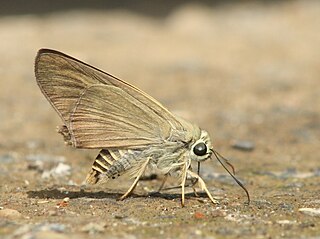
Badamia exclamationis, commonly known as the brown awl or narrow-winged awl, is a butterfly belonging to the family Hesperiidae. It is found in south and southeast Asia, Australia, and Oceania.
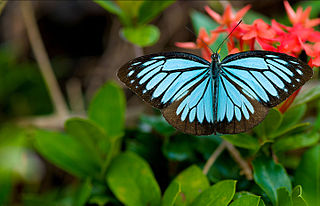
Pareronia valeria, the common wanderer or Malayan wanderer, is a medium-sized butterfly of the family Pieridae, that is, the yellows and whites, and is found in India and Southeast Asia. The butterfly found in India is sometimes considered as a separate species, Pareronia hippia.

Insect wings are adult outgrowths of the insect exoskeleton that enable insects to fly. They are found on the second and third thoracic segments, and the two pairs are often referred to as the forewings and hindwings, respectively, though a few insects lack hindwings, even rudiments. The wings are strengthened by a number of longitudinal veins, which often have cross-connections that form closed "cells" in the membrane. The patterns resulting from the fusion and cross-connection of the wing veins are often diagnostic for different evolutionary lineages and can be used for identification to the family or even genus level in many orders of insects.

Ixias pyrene, the yellow orange tip, is a small butterfly of the family Pieridae, that is, the yellows and whites, which is found in Sri Lanka, India and southeast Asia.

Catopsilia pomona, the common emigrant or lemon emigrant, is a medium-sized pierid butterfly found in Asia and parts of Australia. The species gets its name from its habit of migration. Some early authors considered them as two distinct species Catopsilia crocale and Catopsilia pomona.
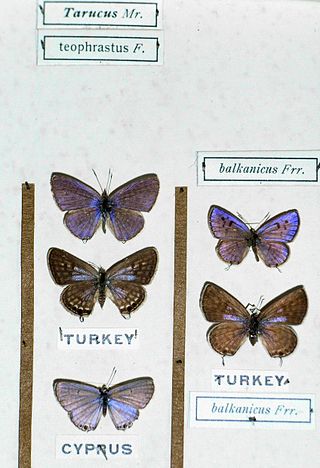
Tarucus theophrastus, the common tiger blue, pointed Pierrot or African Pierrot, is a small butterfly found in the Old World tropics. It belongs to the lycaenids or blues family.

Curetis bulis, the bright sunbeam, is a species of butterfly belonging to the lycaenid family. It is found in Asia.
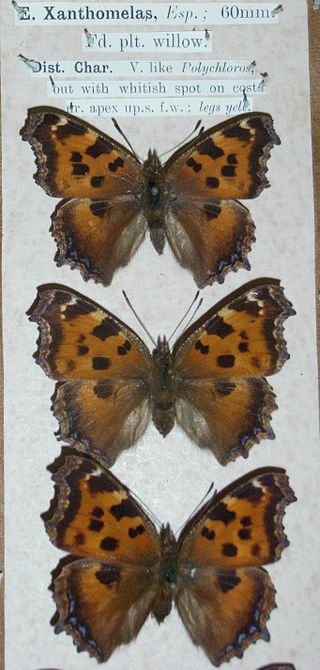
Nymphalis xanthomelas, the scarce tortoiseshell, is a species of nymphalid butterfly found in eastern Europe and Asia. This butterfly is also referred as yellow-legged tortoiseshell or large tortoiseshell.

Pennisetia hylaeiformis, the raspberry clearwing, is a moth of the family Sesiidae.

Corcobara is a monotypic moth genus of the family Erebidae first described by Frederic Moore in 1882. Its only species, Corcobara angulipennis, described by the same author in the same year, is found in India, Thailand, Cambodia, Myanmar, Malaysia, Indonesia, New Guinea, Sri Lanka and the Solomons.
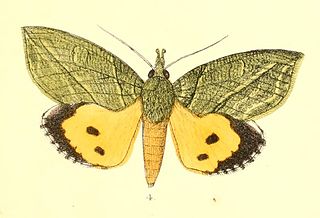
Eudocima hypermnestra is a moth of the family Erebidae described by Pieter Cramer in 1780. It is found in China, Thailand, Taiwan, India and Sri Lanka.

Eucyclodes gavissima, the Oriental orange banded green geometer moth, is a species of moth of the family Geometridae described by Francis Walker in 1861. It is found in the Indian subregion, Sri Lanka, Bhutan, western China, Taiwan, Vietnam, Sumatra and Borneo.

Papilio ambrax, the Ambrax butterfly, is a butterfly of the family Papilionidae. It is found in Queensland, Australia, as well as the Aru Islands, Papua (Indonesia), and Papua New Guinea.

Colias fieldii, the dark clouded yellow, is a butterfly in the family Pieridae. It is found in southern Iran, India, southern China, Indochina, and Ussuri.
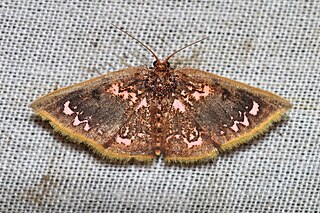
Chrysocraspeda abhadraca is a species of moth in the family Geometridae described by Francis Walker in 1861. It is found in Indian subregion including India and Sri Lanka, Peninsular Malaysia, Sumatra and Borneo.

Charaxes antonius is a butterfly in the family Nymphalidae. It was described by Georg Semper in 1878. It is endemic to Mindanao (Philippines) in the Indomalayan realm.

Brachyopa flavescens, The Yellow Sapeater, is a fairly common species of syrphid fly. It has been observed in northeastern North America. Hoverflies get their names from the ability to remain nearly motionless while in flight. The adults are also known as flower flies for they are commonly found around and on flowers, from which they get both energy-giving nectar and protein-rich pollen. Larvae for this genus are of the rat-tailed type. B.flavescens larvae have not been described.
Blera analis, the orange-tailed wood fly, is an uncommon species of syrphid fly. It was officially described by Macquart, 1842. Hoverflies get their names from their ability to remain nearly motionless while in flight. The adults are also known as flower flies for they are commonly found around and on flowers from which they get both energy-giving nectar and protein-rich pollen. The larvae are of the rat-tailed type feeding on exuding sap or in the rot holes of trees.

Sphiximorpha willistoni, or Williston's wasp fly, is a rare species of syrphid fly found in eastern North America. It is a strong wasp mimic. Hoverflies can remain nearly motionless in flight. The adults are also known as flower flies for they are commonly found on flowers, from which they get both energy-giving nectar and protein-rich pollen. Larvae in this genus are found in sap runs of trees.



















